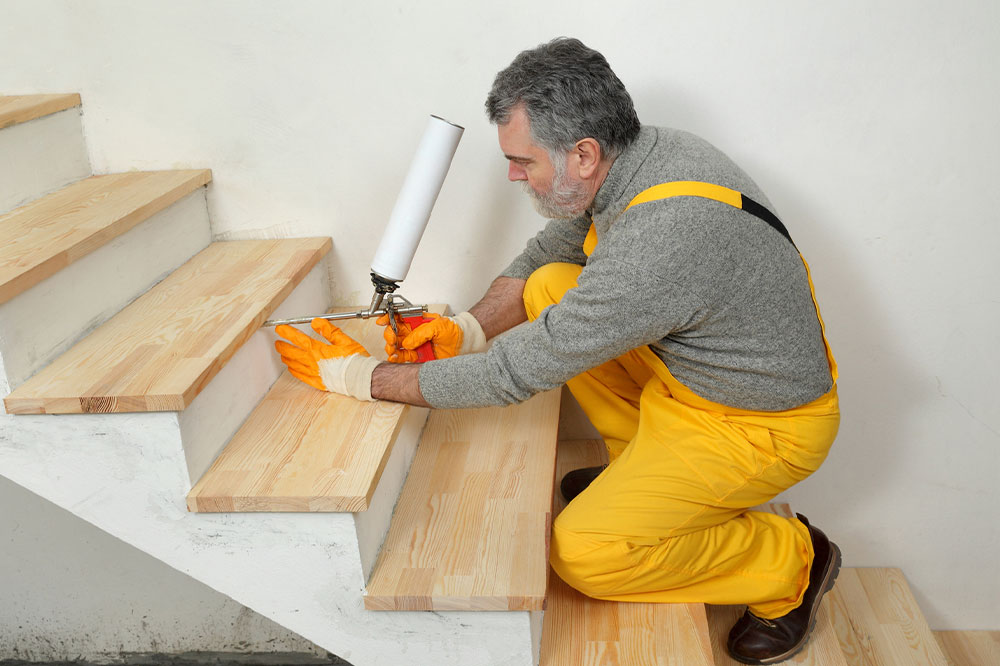20 Uncomplicated Hacks for Home Improvement

If you’re about to remodel your home, you can find many stylish and functional ideas online. These ideas are easy to apply, irrespective of whether you’re a seasoned DIY enthusiast or someone performing home renovation for the first time. Moreover, they’re budget-friendly, so you wouldn’t have to use up your savings. From quick organization tricks to décor upgrades, here are a few easy hacks for home improvement you can try.
Maximize closet space
Utilize space-saving organizers, such as hanging shoe racks, cascading hangers, and drawer dividers, to optimize your closet’s storage capacity and keep items easily accessible. You can also install hooks or a pegboard for additional hanging space.
Redesign the kitchen cabinets
Installing pull-out shelves or lazy Susans inside cabinets will maximize space and improve organization. Similarly, using drawer organizers for cutlery, utensils, and small kitchen tools will keep everything tidy and within reach. You can also label containers or use clear storage bins for better visibility.
Create a command center
Consider creating a centralized command center near your entryway to keep track of schedules, messages, and keys. This center can have a bulletin board, wall calendar, and hooks for better functionality and organization. If necessary, install a charging station for electronics and a mail sorter to manage incoming correspondence.
Revamp your garage storage
Transform your cluttered garage into an organized space by installing shelving units, pegboards, and hooks. Utilize overhead storage racks to keep seasonal items or bulky equipment out of the way. Like the kitchen, your garage can have clear storage bins.
Declutter with style
Home renovation is the best time to declutter your home and remove unnecessary items. Embrace minimalist design principles by donating or selling things you no longer need. Adopting a “less is more” approach will create a clean and visually appealing environment.
Install mirrors for illusion
Hang mirrors strategically to create an illusion of a larger space and enhance natural light. You can place them opposite windows or in narrow hallways to open up the area and add a touch of elegance. Consider using mirrored tiles or a full-length mirror to create a focal point.
Create an accent wall
Give your room a new look by creating an accent wall. Choosing a bold color, wallpaper, or textured paneling will add depth and visual interest. It’s a quick and cost-effective way to revitalize your space. Consider reclaimed wood or geometric patterns for a unique touch.
Incorporate creative storage solutions
Incorporate decorative storage options, like ottomans with hidden compartments and floating shelves, to display and store your belongings. These not only serve a functional purpose but also add style to your room. To maximize space, you can utilize under-bed storage, wall-mounted baskets, and storage benches.
Create an art and gallery wall
You can create a gallery wall by displaying your favorite artwork, photographs, or framed quotes. The wall will add personality to your space and serve as a conversation starter. Experiment with different arrangements and frame styles for a unique and curated look.
Introduce greenery with indoor plants
Bring the outdoors inside by adding houseplants to your home. Plants not only add beauty but also purify the air and create a calm atmosphere. If you’re new to plant care, choose low-maintenance varieties, such as snake plants and pothos.
Clean tile grout
Brighten up your bathroom or kitchen by cleaning the grout between tiles. Using a grout cleaner and applying a fresh coat of grout sealant will give your space a refreshed appearance. Consider a grout pen for minor touch-ups.
Re-caulk the tubs and sinks
Improve the look and functionality of your bathroom and kitchen by refreshing the caulking around sinks, tubs, and showers. Remove old caulk, clean the area thoroughly, and apply a fresh bead of caulk for a clean and watertight seal.
Paint the walls
Give your walls a fresh coat of paint to breathe new life into your space. Light and neutral colors are best to create a bright and inviting atmosphere. Consider painting an accent wall or adding a decorative stencil for visual interest.
Quick-fix the plumbing
Basic plumbing skills can come in handy to perform minor repairs like fixing leaky faucets, unclogging drains, or replacing showerheads. It will save you money on service calls and help you address issues promptly.
Weatherproof the house
Ensure your home is well-insulated and protected from external elements like rain and snow. Weatherstripping can seal gaps around doors and windows, preventing energy loss. Moreover, insulating your attic can maintain a comfortable temperature and reduce heating and cooling costs.
Install LED lighting
Replace traditional incandescent bulbs with energy-efficient LED lights. LED bulbs consume less energy, last longer, and provide better lighting quality. You can choose between warm or cool tones to create the desired ambiance in different rooms. Consider installing dimmer switches for adjustable lighting levels.
Get a smart thermostat
Upgrade to a programmable or smart thermostat to optimize energy usage and save on heating and cooling. Smart thermostats allow you to set temperature schedules, adjust settings remotely, and track energy consumption. The best part, you can integrate them with your smart home system for better control and energy management.
Opt for window treatments
Energy-efficient window treatments, such as blackout curtains or cellular shades, insulate your home. They reduce heat loss during winter and heat gain during summer. Window films block harmful UV rays while allowing natural light in.
Assess the home’s insulation
Check your home’s insulation and add more if needed. Proper insulation keeps your home comfortable, reduces energy consumption, and lowers heating and cooling costs. Insulating attics, walls, and crawlspaces can prevent air leaks and maintain a consistent temperature.
Switch to energy-efficient appliances
Consider upgrading old appliances to energy-efficient models. Systems with the ENERGY STAR label meet strict energy efficiency standards. They not only save energy but also reduce utility bills in the long run.
These easy home improvement hacks will transform your living space, increase functionality, and add a touch of personal style. Remember to prioritize safety, use the right tools, and follow instructions carefully.



